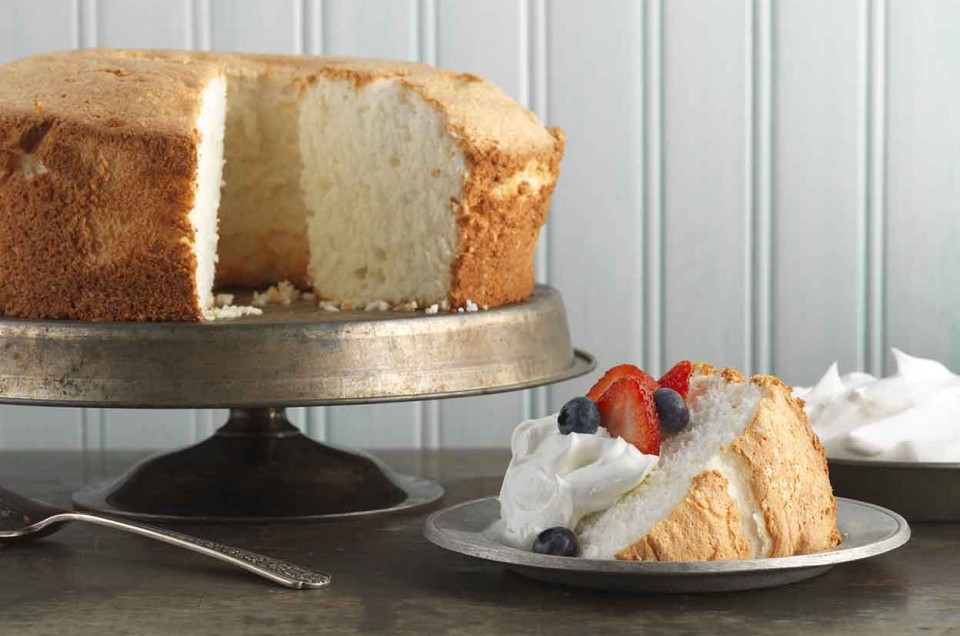Gluten-Free Angel Food Cake
This high-rising, flavorful cake is perfect topped with strawberries and whipped cream. It's so tender and light, no one will suspect it's gluten-free!

This high-rising, flavorful cake is perfect topped with strawberries and whipped cream. It's so tender and light, no one will suspect it's gluten-free!

Preheat the oven to 350°F with a rack in the lower third; you want to give your cake plenty of rising room without danger of burning its top.
Whisk together and then sift the flour, cornstarch, and 3/4 cup (143g) sugar. Set aside.
In a large, clean (grease-free) mixing bowl, beat together the egg whites, salt, and cream of tartar until foamy.
Add the flavorings. Gradually increase the speed of the mixer and continue beating until the egg whites have increased in volume, and thickened.
Gradually beat in the 3/4 cup + 2 tablespoons (167g) sugar, a bit at a time, until the meringue holds soft peaks.
Gently fold in the sifted flour/sugar blend 1/4 cup at a time, just until incorporated.
Spoon the batter into an ungreased 10" round angel food pan. Gently tap the pan on the counter to settle the batter and remove any large air bubbles.
Bake the cake until it's a deep golden brown, and the top springs back when pressed lightly, about 45 minutes.
Remove the cake from the oven and invert the pan onto the neck of a heatproof bottle or funnel, to suspend the cake upside down as it sets and cools, about 2 hours.
Remove the cake from the pan by running a thin spatula or knife around the edges of the pan, and turning the cake out onto a plate.
Cut the cake with a serrated knife or angel food cake comb. If it's difficult to cut, wet the knife and wipe it clean between slices.
Serve with whipped cream and fruit. Wrap any leftovers airtight, and store at room temperature.
Be aware: some of your baking ingredients can be a hidden source of gluten. Learn more at our blog post: For gluten-free baking, think beyond just flour. For additional information on King Arthur-produced products, read the complete details of our allergen program, including our contact-prevention practices.

Popular in recipes
Popular in products

